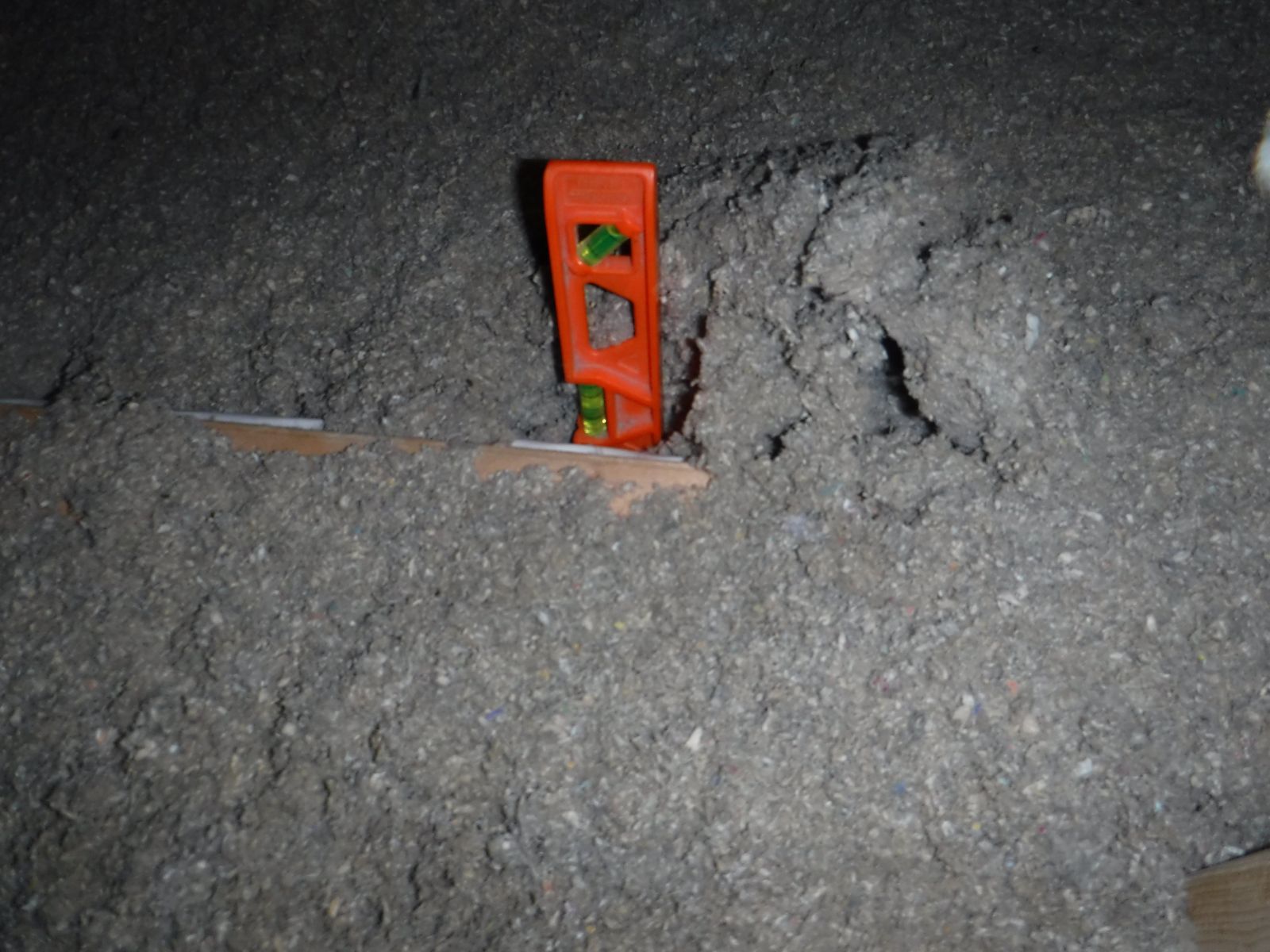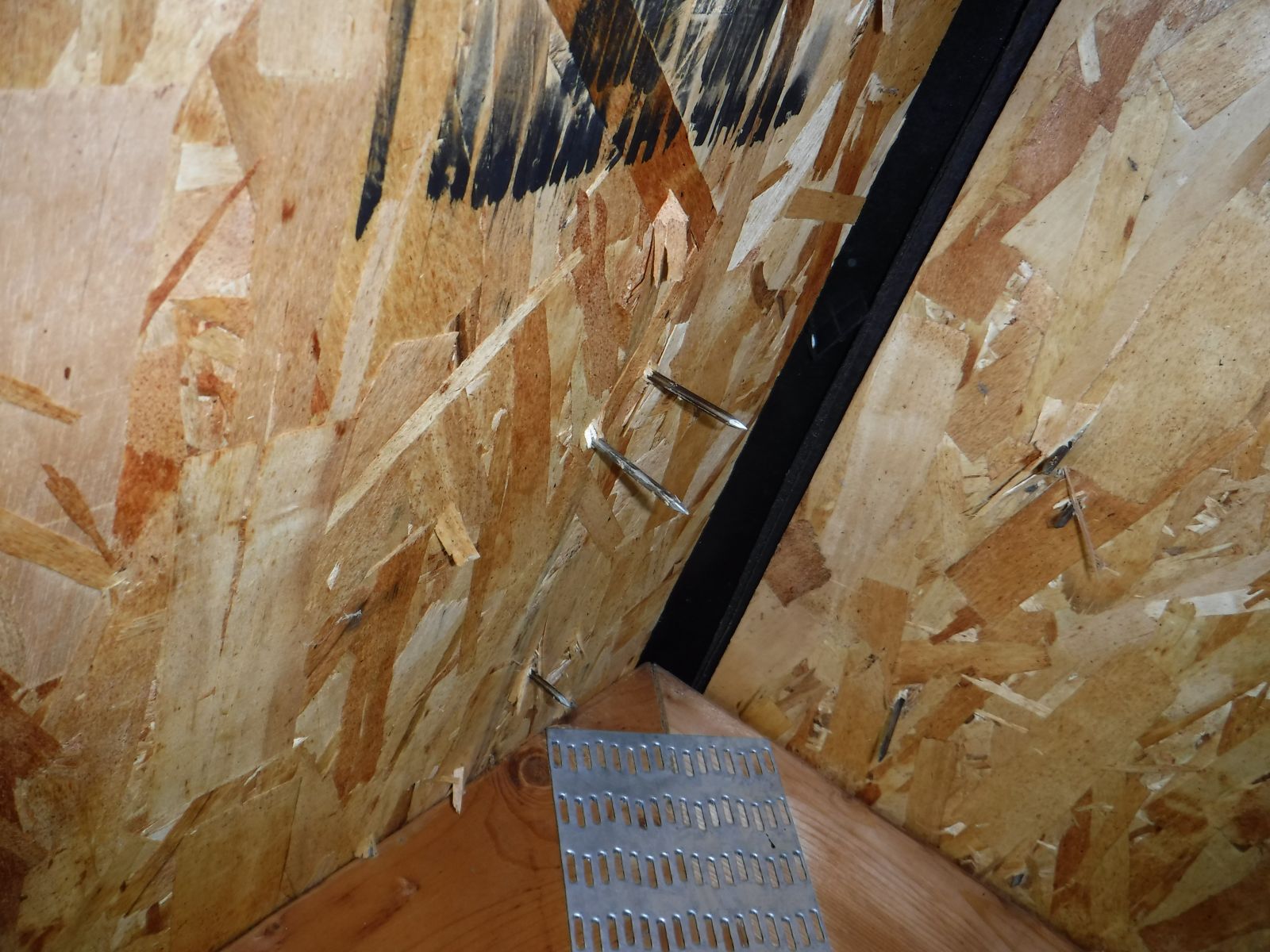Attic insulation and ventilation
Posted: 7 years, 5 months ago
Typical unconditioned attic spaces in our northern Michigan climate should be ventilated. This allows relatively warmer moist air to escape the attic before it can 1) cool to the point it condenses water (reaches the dew point) and 2) heat the roof deck which melts the snow on the roof, caisung ice dams. Ventilation helps rid the attic of moisture which can damage components in the attic meant to provide support to the roof structure or the roof structure itself.
Note that this discussion is intended for conventional attics either rafter or truss framed, not cathedral although some parallels can be drawn.
The sketch below indicates typical ventilation strategies where outside air is pulled in at the soffit, travels through the attic and leaves the attic at the ridge vent. The air moves by convective forces, or the so called "stack effect". Note that there are many ways to ventilate an attic space, and for this discussion we are narrowing our focus only to soffit/ridge venting.
.jpeg)
In this house in Traverse City, there is a dormer installed which lacks ridge venting. This disruption to the air flow is allowing the heated attic air to cool to the dew point, causing the frost we see on the wood components and roof fasteners.
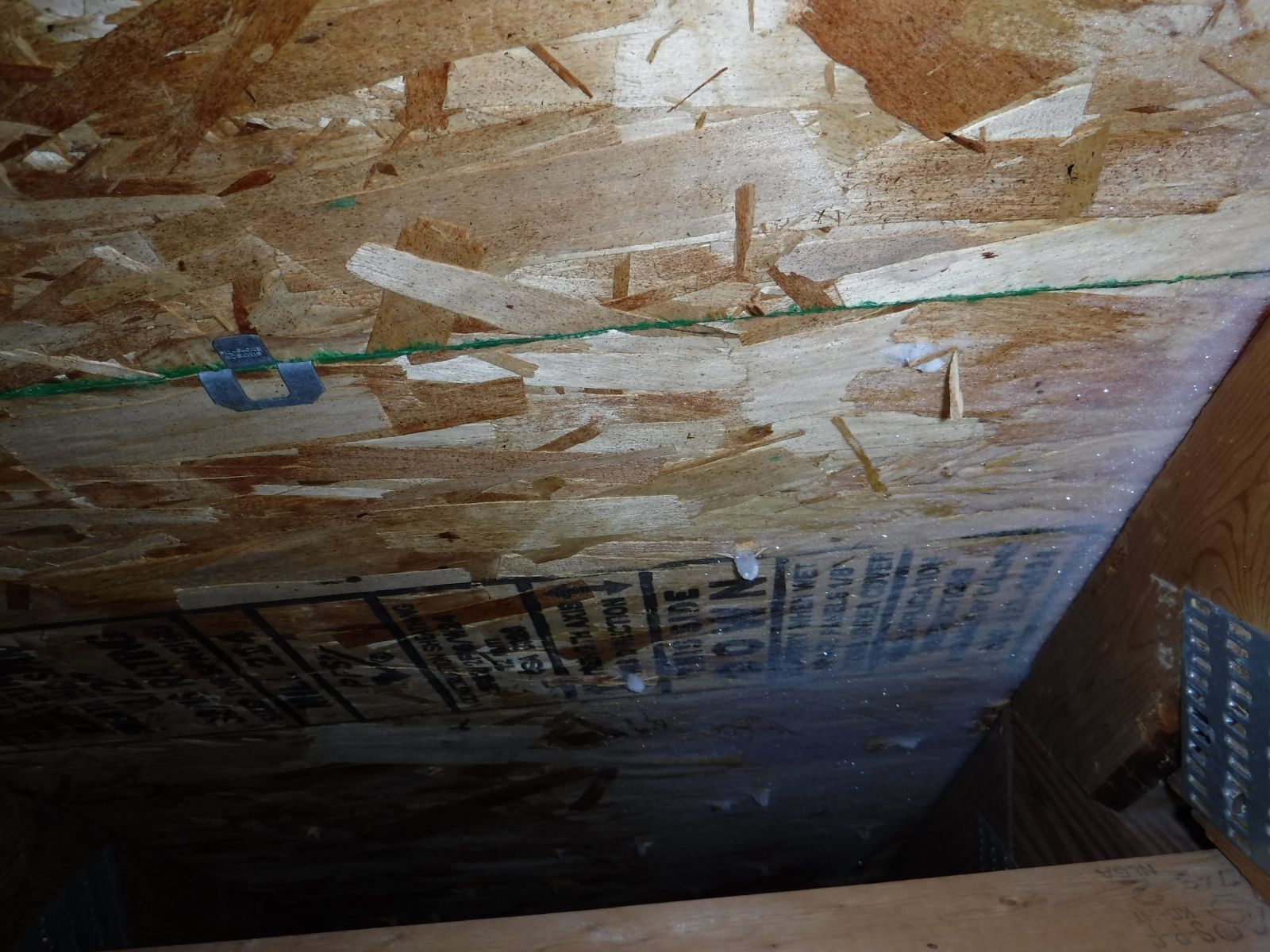
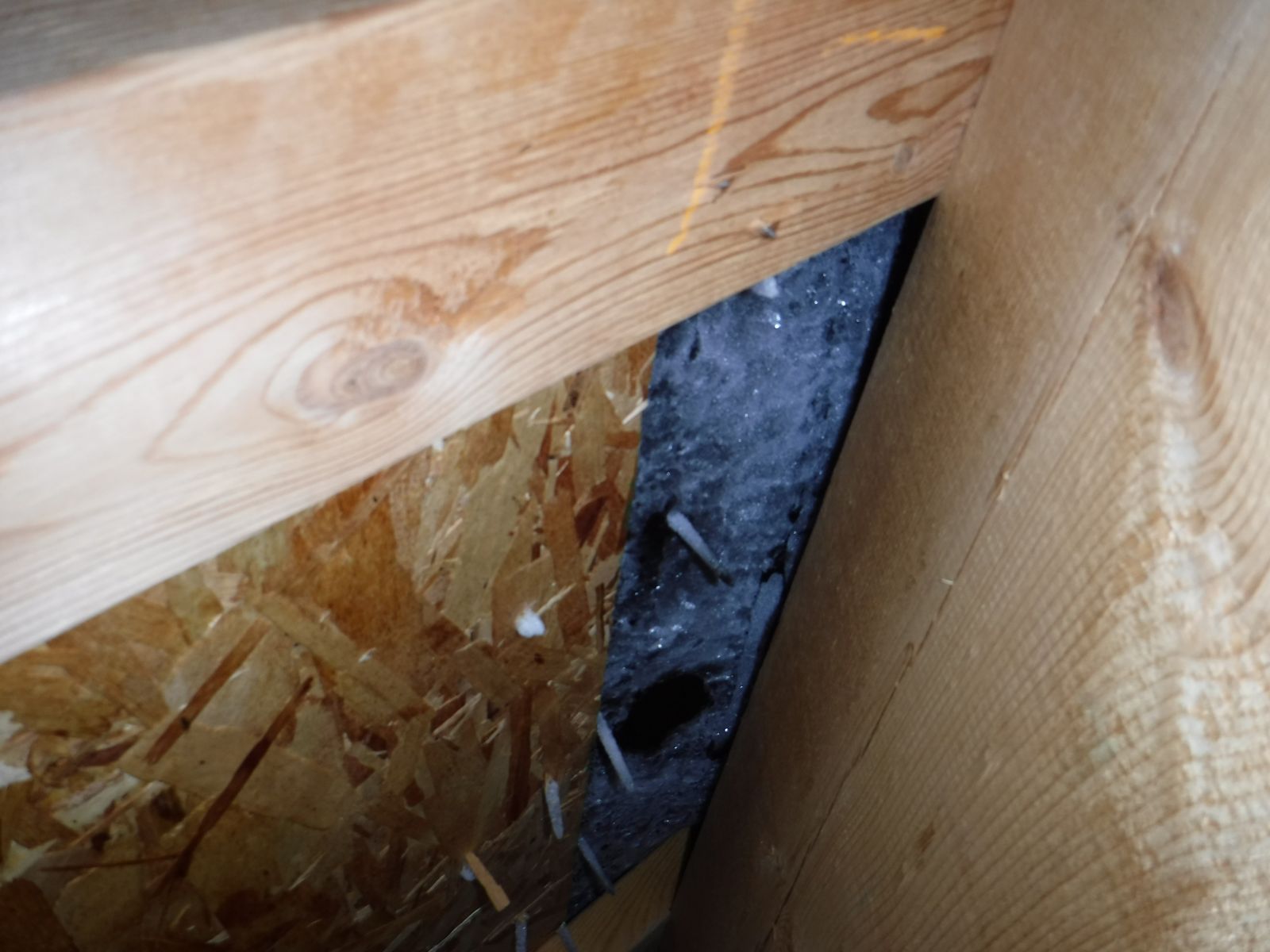
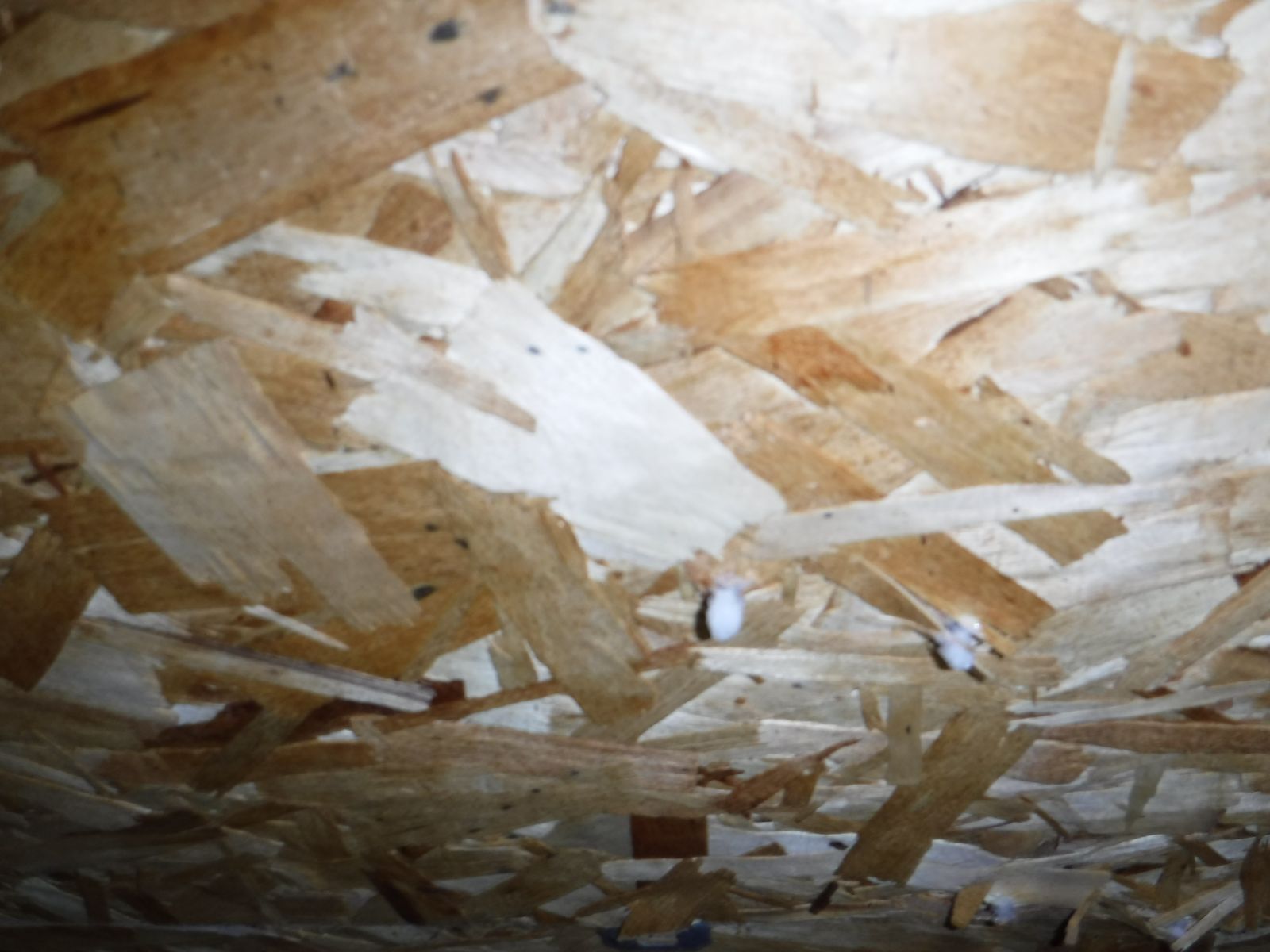
In the photo below, we see a less than expected insulation level. The house was built in 2005. The orange object is a 9" pocket level, showing there is around 4" of cellulose insulation in this attic, around R15. If the home were built today, minimum insulation in our climate would be R49. The insufficient insulation is only adding to the ventilation burden of the attic.
Ridge venting in the area of the dormer is not installed or has underlayment blocking the ridge vent (wouldn't we love to know why! ). The warm moist air cannot get out of the attic.
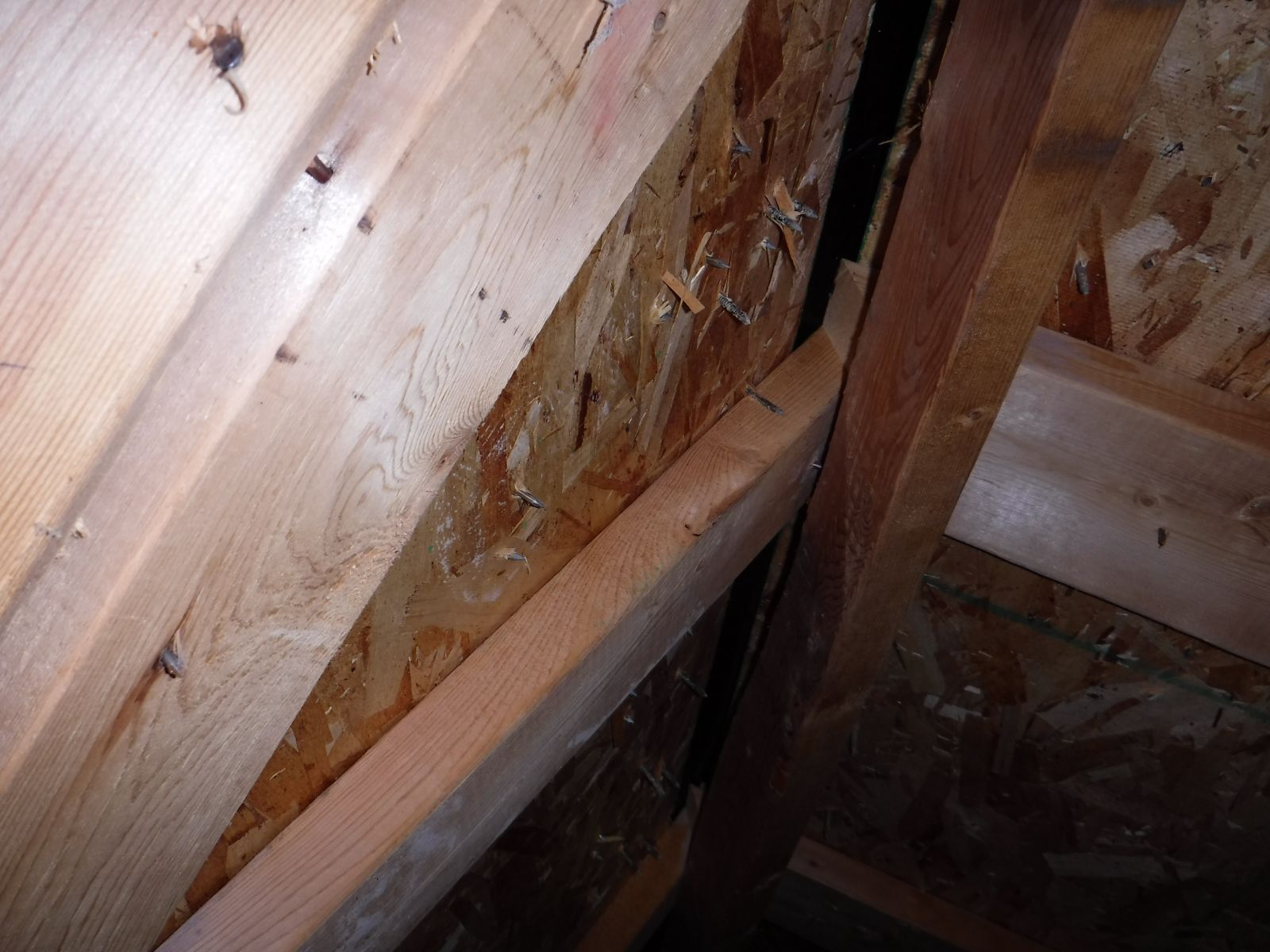
Over time this will cause staining of the wood components and rust on the metal components. If left uncorrected long enough, the roof decking will soften and the wood support structure will rot.
Share on Twitter Share on Facebook Back to Blog

